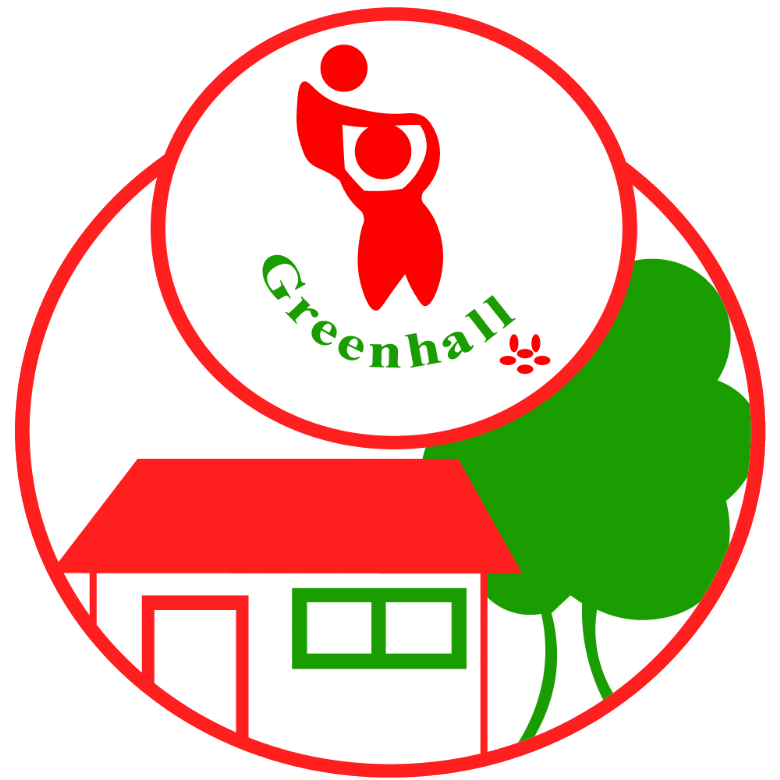Teaching & Learning Principles
Greenhall principles of teaching and learning
- Do you know me? -
Our curriculum is highly personalised, meeting the child where they are at and building on in small steps to where we want them to be. It incorporates children’s interests and is child-needs led. Where children need processing time, we will provide it.
- Do you hear me? -
We provide a total communication environment. We ALWAYS ensure our children have a voice and make space to listen.
- Is this place fair for me? -
We provide clear, consistent and appropriate expectations. Our planning and environment pays attention to cognitive load.
- Can I trust you? -
Relationships are key. - We work WITH the children, providing high support and high challenge! Staff facilitate and scaffold to ensure a child experiences success. The amount and type of facilitation is bespoke to the child and circumstance. - Children learn from and with each other – and we encourage this.
- Do you let me fly? -
ALL children can learn! We aim to maximise neuroplasticity. - We explicitly teach new skills and knowledge and then provide the opportunities for the child to apply these across the daily routine. We develop a ‘can do’ attitude in our children so that they are active and independent and become problem-solving champions! - We use the principles of Conductive Education to teach our children with physical needs.
Explanation of principles
Do you know me?
Personalised
Every child is unique, therefore our curriculum reflects this and is highly personalised. We do not make assumptions about the kind of knowledge or skills that children may bring with them from home (Best Start in Life Part 1 research). We spend the first 6 weeks getting to know the children and completing a baseline assessment in order to plan for their next steps.
Our curriculum incorporates children’s interests but is not solely based on these for we recognise that some children will only choose activities / games that they already know which could limit their development. Thus, in Greenhall, our curriculum is topic based with the topic being the vehicle for delivering new concepts and teaching new skills. In Little Learners, we use seasons and books as a vehicle for this, alongside children’s interests.
Small steps
Tasks are broken down into small steps. This links to one of Rosenshine’s principles of Instruction (see below) and algorthymic structure in Conductive Education – where each task is broken down into small, achievable steps with the solution of one task being the partial solution of the next.
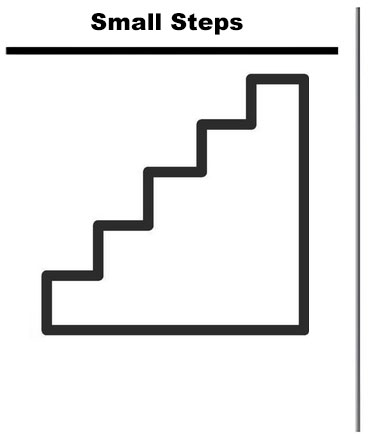 New content is introduced to pupils in small steps.
New content is introduced to pupils in small steps.
Pupils practice and teachers check for understanding after each chunk of new content has been introduced.
Explanations of new content include explicit links to prior learning.
The introduction of new content includes examples and none-examples.
The introduction of new content includes checking for listening and understanding.
This process explicitly shows how to break down tasks into smaller steps. We provide feedback to the child at each stage, praising success.
By building in small steps, using our knowledge of child development and the individual child, we ensure that our curriculum is coherently planned and well sequenced. A planned and sequenced curriculum is promoted by the DfE as being key to success in the Education Inspection Framework.
We used the Engagement Profile for our children in Greenhall and use information obtained from these observations in order to increase engagement in other areas. Our curriculum is child-needs led – it is shaped to build on what the child can do and what their next steps are for learning. Due to the age and stage of development of our children, there is a real focus on the prime areas – Communication and Language, Physical Development and Personal, Social and Emotional development. These are the areas that, for the children in Greenhall, their main difficulties and needs lie.
Where children need processing time, we will provide it. This is particularly important for children with sensory processing difficulties or neurodiversity. Our children with physical difficulties need time to process and carry out an action. The average person with no communication difficulties takes 10-15 seconds to process new information. For some children, their processing time is much longer. ‘Processing time is powerful and can have a significant impact on a person’s communication and independence’.
Do you hear me?
"In recent years, research has shown that if practitioners assume children are capable of more, and provide input to match these assumptions, then the results often exceed the expectations of everyone working with them"
(Mirenda, 2008).
At Greenhall, we use a Total Communication approach, providing the children with a toolkit full of a range of communication strategies and tools that they can use as appropriate. Examples of these include Makaton signing, symbol use, PODD, PECS and objects of reference.
The importance of modelling communication and language is crucial and we believe in creating a communication & language rich environment. Thus, we invest highly in staff CPD in this area to ensure we provide the very best opportunities for our children.
Adults model the use of communication in all its forms, creating interactions and acting in response to children’s communication attempts. For example, assuming a child’s vocalisation or action is an attempt at communication and responding accordingly. In this way, we are encouraging the child to repeat this and to make links between their action and response achieved (cause and effect). We actively allow time for children to respond, recognising the need for processing time and the effort required for some children to initiate communication. We provide opportunities for choice-making as an initial step to having a ‘voice’ whilst also acknowledging that in making a choice, a child can only choose from the options available to them and he / she make want something else entirely. Coaching circles provide space for children to learn how to listen to others as well as promoting the turn-taking nature of conversation.
Is this place fair for me?
We provide clear, consistent and appropriate expectations. Our planning and environment pays attention to cognitive load.
We recognise the importance of routine and structure, particularly for children with additional needs, in order to make sense of their world and their place within it. Thus, we provide clear and consistent expectations for all of our children.
For example, transitions are supported through the use of now and next boards or visual cues used alongside speech (simplified language). If a child throws something on the floor or casts objects, they are shown a symbol and asked to pick it up (and are assisted to do so), as appropriate to their age and stage of development.
If a child is struggling and this is reflected through their behaviour (all behaviour is communication) we will always seek to understand the child’s voice – what are they trying to tell us for example, ‘I don’t understand’, ‘I’m bored’, ‘I want that’ etc. Through the creation of an individual behaviour plan, we will ensure consistent responses from staff in how to respond to the child.
We also believe in emotionally coaching our children, making space to recognise their emotions and wondering why they might be feeling this way.
Our expectations are high, yet appropriate. For example, expecting a child to sit for significantly longer than they are able is setting them up to fail. Thus, we use our knowledge of the child and what he / she can do and build upon this to set appropriate goals. We use sensory integration to ensure that our children have had their sensory needs met and are therefore in a position to learn. For example, some of the children ill take part in sensory circuits to support this. Positioning is key with children with physical needs so that they are in a place and position in order to access the toy / resource in front of them.
Cognitive load theory identifies that working memory has a limited capacity so if we are presented with too many things at once, the brain experiences overload, quite simply, it is too much! In order to tackle this, we strive to remove irrelevant material and instead focus on what the child needs to know or what needs to be present. For example, we have removed many display boards from classrooms and corridors, particularly within the Greenhall learning environment in order to remove visual clutter. We use ‘Bucket Time’ (Attention Autism) to build children’s concentration and attention skills. We explicitly teach vocabulary, modelling it’s use repeatedly before expecting our children to use this, particularly with regards to alternative methods of communication e.g. symbols.
Can I trust you?
Relationships are key and we invest time in getting to know each other as staff (through check-ins and check-outs). Wherever possible, we carry out home visits with Greenhall new starters as this provides us with a valuable opportunity to get to know the family. Our induction paperwork reflects the whole child and their family.
We seek to apply the relationships window to all relationships across our setting and aim to be in the optimum ‘WITH’ window.
We work WITH the children, providing high support and high challenge. We also model making mistakes and trying again so that the children learn resilience. By knowing the individual well, we ensure that tasks are appropriate and that all interactions are purposeful and sensitive in order to enhance learning.
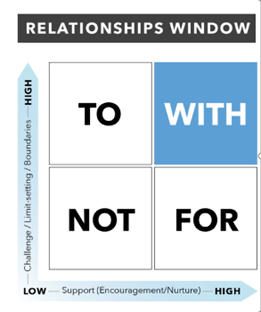
Staff facilitate and scaffold to ensure a child experiences success. An individual facilitated to achieve success in a way that enhances learning. There are different forms – psychological, educational, physiological as well as manual. Aids and equipment are used widely with the aim of facilitating skill development – we are not looking for an individual to become dependent on this. The amount and type of facilitation, or help is bespoke to the child and circumstance. For example, one child may be supported to step with the use of a ladder, arm splints and manual facilitation from a person whereas another child may just need verbal prompting to ‘push (the ladder), step, step’.
The diagram below captures scaffolding. This is based on Vygotsky’s theory and the zone of proximal development – the idea that with help from others e.g. a teacher, the child can learn more complex skills / knowledge that what he / she would be able to do on their own. Scaffolding is one of Rosenshine’s Principles of Instruction.
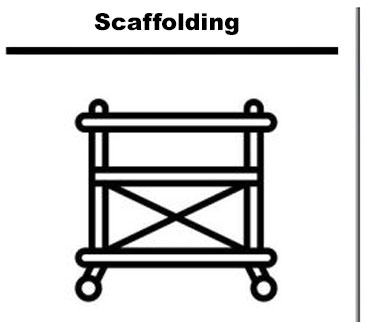 Teachers provide scaffolds to help pupils complete tasks.
Teachers provide scaffolds to help pupils complete tasks.
These supports are withdrawn as pupils become more competent.
A range of scaffolds are used, dependent on the task, including models, worked examples, exemplars, writing supports, reading supports, checklists, partially completed tasks, working walls and manipulatives.
We recognise that many children need explicit teaching and guidance and our teacher-led activities are key to this. For example, during the teaching of Little Wandle Phonics, staff introduce new vocabulary through the use of objects, beginning with the focus phoneme. Staff then define what the object is, modelling and expanding vocabulary in the process. We also provide opportunities for provision in which the child can lead their own play – learning, practising and refining their skills. This is recognised as best practice in Early Years (DfE 2023).
We recognise that children learn from and with each other and therefore we maximise the use of the group wherever possible whilst also acknowledging that some children need 1:1 teaching as they are not yet ready to sit alongside others.
Do you let me fly?
Everyone can learn! We believe that there is a champion in all of us and that is mission at Greenhall and Little Learners to ‘Nurture the Champion within.’ We want to see every child reach their potential and recognise that this is a very personal journey for each child.
We firmly believe in early intervention and seek to maximise neuroplasticity that is so evident in a young child’s brain.
Neuroplasticity is the brain's ability to reorganise itself by forming new neural connections throughout life. It allows the neurons (nerve cells) in the brain to compensate for injury and disease and to adjust their activities in response to new situations or to changes in their environment.
A child’s brain is at its most plastic during the early years. A child will have the highest level of synapses at this time. A child’s senses report to the brain about her environment and experiences, and this input stimulates neural activity. Repeated use strengthens a synapse.
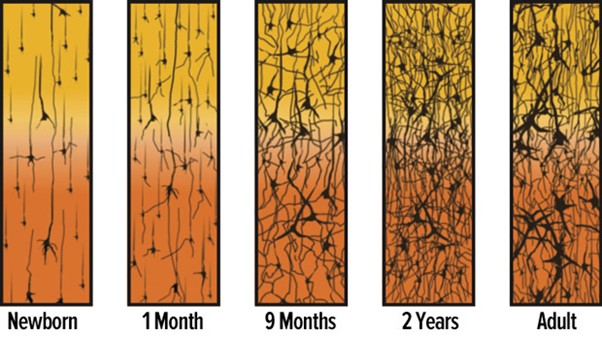
Synapse density overtime in a child’s brain
If you can maximise development in this period, you will reap dividends later on.
There is a natural transition point in early years – if you get the right support in early and effectively support transitions to schools, a child may not need the level of support that they would otherwise have.
The cognitive science model of memory (below) illustrates the importance of repeating or ‘rehearsing’ in order that knowledge transitions from working memory to long term memory and is not forgotten again. Opportunities to practice and repeat tasks and apply this across the daily routine supports this process.
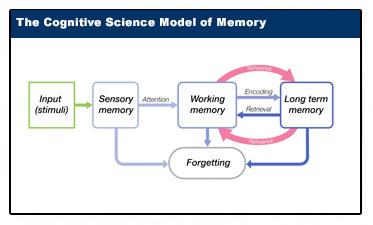
We teach new skills and knowledge, explicitly. For example, with our Greenhall Hedgehogs class, children are taught how to change place and position through the task series, with each movement task being broken down into small steps. We use ‘Squiggle’ programme to teach how to mark-make, first using gross motor movements in the air and then making marks in sensory materials or on paper with mark-making tools. We always provide the child with opportunities to practise and apply this new learning across the daily routine. For example, through continuous provision or stepping with a ladder is the application of bending and straightening a leg in task series. This links to Rosenshine’s principles of guided practice and independent practice and encourages our children to be problem-solvers, building and utilising what they know.
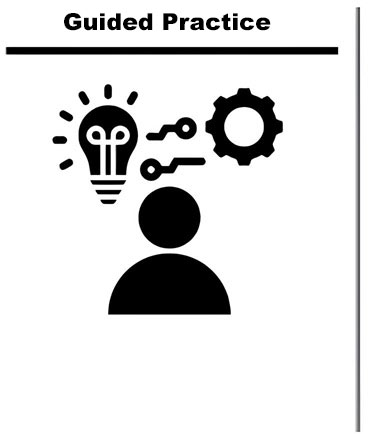 Pupils are given lots of opportunities to rehearse new knowledge or practice new skills.
Pupils are given lots of opportunities to rehearse new knowledge or practice new skills.
Initial practice is guided by the teacher - for example, completing tasks as a class, partially completed tasks.
Practice concentrates on the learning rather than the activity and should require pupils to think harder about the most important elements.
Scaffolding is used in initial practice to help ensure pupils can complete tasks - examples include writing frames, worked examples, checklists.
Guidance and scaffolding are faded over time so pupils eventually complete tasks independently.
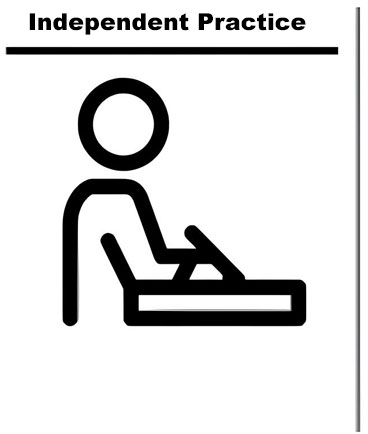
All pupils are required to complete extensive independent practice.
Independent practice initially takes the same format as guided practice.
As pupils complete independent practice, teachers circulate the room and monitor pupil progress.
Live feedback, including short individual interactions, reviewing work under visualiser and whole class verbal feedback is given during independent practice.
Cooperative learning and peer feedback are used where appropriate.
Once pupils knowledge is secure teachers set tasks that require pupils to investigate and solve problems for themselves.
Ensuring that children experience success is key to creating synapses in the brain and establishing strong neural pathways. Thus, we build Rosenhine’s principle of a high success rate into our daily teaching and learning.
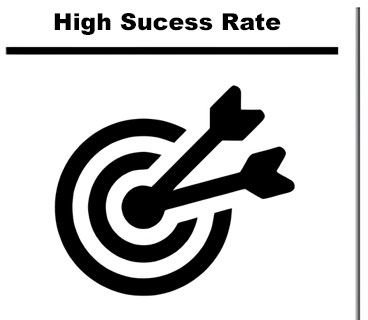 Teachers ensure that pupil practice is successful through presenting material in small steps, guiding practice, giving feedback on practice, checking for understanding of all pupils, and responding in their teaching.
Teachers ensure that pupil practice is successful through presenting material in small steps, guiding practice, giving feedback on practice, checking for understanding of all pupils, and responding in their teaching.
Teachers challenge all learners by setting appropriate but complex tasks and covering challenging content.
This helps our children to develop a ‘can do’ attitude.
We value the definition of cultural capital as ‘the essential knowledge that children need to prepare them for their future success.’ Therefore our curriculum is used to enhance our children’s experiences and opportunities. However, this is balanced with our knowledge of the child and their starting point and ensures relevance. For example, we recognise that some of our children need to learn to tolerate other child in their classroom before taking them to a busy soft play area with lots of children running around. This illustrates how personalised our curriculum is.
We have identified Champion Opportunities that we want to provide for ALL of our children during their time with us and these are built into our curriculum.
We recognise the importance of practise and so ensure that our children are actively involved in their learning. By working WITH the children rather than doing things FOR or TO them, we ensure that they do not become reliant on adult support but rather that this is an aid to gain greater knowledge and skills. We want them to become as independent as possible and even at this early age, we are preparing them for adulthood. We are creating problem-solving champions!
We use the principles of Conductive Education (CE) to teach our children with physical needs.
Greenhall is proud of its CE heritage and the positive impact that this has had on children’s development. Today, we recognise the diverse needs of our school population and acknowledge the importance of working with the available resources yet still believe that ALL children benefit from the principles of Conductive Education.
For our children whose main needs are in relation to their physical development, we deliver the Early Years Foundation Stage through the holistic learning approach of Conductive Education. Conductive Education aims to encourage pupils to be active learners and problem solvers in every situation.
The Conductive Education System provides the structure within which all of the pupils needs are met. This includes personal, social and emotional skills, communication and physical development and also enables the children to have access to a broad and balanced Curriculum. Conductive Education therefore is not a ‘subject’ and does not operate in isolation but underpins all aspects of learning within the school.
Conductive Education prepares pupils for inclusion into their local community. Children learn how to adapt their skills to function in new situations that they are likely to face in their wider environment. We also plan opportunities for social inclusion through link days with Little Learners, our governor-run nursery, where children are facilitated to ensure success and enjoyment.
What is Conductive Education?
Conductive Education is a holistic teaching pedagogy that originated in Hungary by Andras Peto. It was developed to teach children and adults with motor disorders, such as Cerebral Palsy, Parkinson’s disease, multiple sclerosis, stroke, acquired head injury and dyspraxia. It features key principles;
- A belief that the individual CAN learn – it utilises neuroplasticity in order that the individual can re/learn lost or impaired functionality
- The goal is orthofunction –to develop an orthofunctional personality – a ‘can do’ attitude in the individual, a problem-solver – in order that they can achieve their potential
- Learning is active
- Movement, when linked with intention gains importance.
- Social interactions are important - the group plays a key role in CE as learning together with others is motivating.
- Individuals need clear and consistent expectations
- Opportunity to practice and apply the skills learnt is crucial in order to reach goals and achieve success
- Experiencing success at all stages is key
CE has key features These are;
The Conductor
An individual trained in Conductive Education. He / she is a motivator, trained to build on an individual’s abilities and help them to realise their potential. He / she teaches and guides the group, constantly observing and making changes along the way.
The Group
This provides the benefits of social interaction, motivation, group dynamics, support and learning and healthy competition. Working in a group deflects the attention from the individual whilst still meeting individual needs.
The programme / daily routine
This is well planned and highly structured. It is a dynamic process - every activity has an educational purpose and the learning is integrated into every part of the child’s day.
The Task Series
The task series is a structured part of the daily routine. Each task series is a teaching tool, a series of movements carried out in a variety of positions. It serves to equip individuals with the required skills and techniques to accomplish their goals. It is tailored to the group and each individual within the group.
It has an algorithmic structure with the solution of one task being the partial solution of the next – each task is broken down into small, achievable steps.
Rhythmical intention
This is comprised of intention and rhythm.
What is automatic to most people has to be learned by people with neurological conditions. Intent alone may not be enough to accomplish the desired action.
Thus, we use rhythmical intention. The Conductor will say aloud ‘ I bend my left leg’, thus triggering a number of cognitive processes. This is based on a theory of speech that what is externalised is later internalised. It prepares the central nervous system for action and increases the ability to carry out the action. The individual then repeats the phrase aloud.
The use of rhythm (music, counting, and dynamic speech) helps individuals to successfully intend, initiate and carry out movements successfully. This is particularly effective for those individuals with spasticity (tight muscle tone) or difficulty initiating movements.
Rhythm & singing or music are effective tools for learning, providing motivation.
Facilitation
An individual is helped / facilitated to achieve success in a way that enhances learning. There are different forms – psychological, educational, physiological as well as manual. Aids and equipment are used widely with the aim of facilitating skill development – we are not looking for an individual to become dependent on this.
Observation
This is an ongoing process, involving assessment, evaluation and consideration of what needs to be changed / adapted to enable further learning.
The learning environment
This is critical to the success or failure of skill development. It is highly structured, supportive, motivating, supportive and challenging, with continued opportunities to reinforce learning. There is a focus on transferring skills learnt into the home environment.
For more information, see ‘What is Conductive Education?’ PCA publications - Professional Conductors Association (PCA UK) (pca-ce.org)


